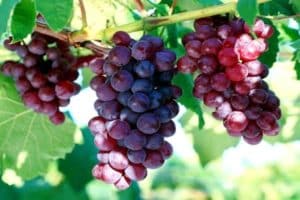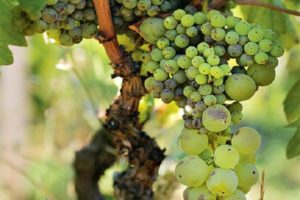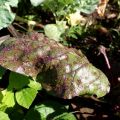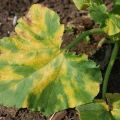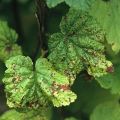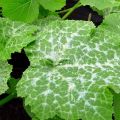What to do if red spots appear on the leaves of grapes, how to deal and how to treat
Infections detected in a timely manner are amenable to quick treatment, so gardeners need to regularly inspect fruit crops. One of the reliable signs of grape disease is red spots on the leaves. An accurate diagnosis can be established by examining in detail the damaged bushes.
Causes of leaf redness
There are several reasons for red spots on grape leaves:
- infectious diseases;
- pest infestation;
- lack or excess of certain nutrients;
- uneven distribution of the load on the vines.
Important. Reddening of the leaves occurs in colored grape varieties. With the same diseases, spots on white grape bushes usually take on a yellow and brown color.
The nature of redness can be judged by some signs:
- Focal redness of the leaves speaks of the infectious nature of the disease (rubella).
- A uniform reddening of the green mass may be a symptom of a lack of potassium and phosphorus. And also about the excess of fluorine-containing mineral fertilizers.
- Red spots with the presence of pinpoint bites, cobwebs, larvae on the back of the leaf is caused by the high distribution of some insects (leafhoppers, spider mites) that feed on plant sap.
Infectious rubella
A common fungal disease caused by the marsupial fungus Pseudopeziza tracheiphila Muller-Thurgau. It affects the leaves of the plant, very rarely bunches and stems. Vines and crops suffer due to the death of a large number of leaves in the lower part of the shoots in early spring. Bunches of grapes on infected bushes are lagging behind in development. The widespread occurrence of this disease can lead to the loss and spoilage of up to 70% of the fruits.
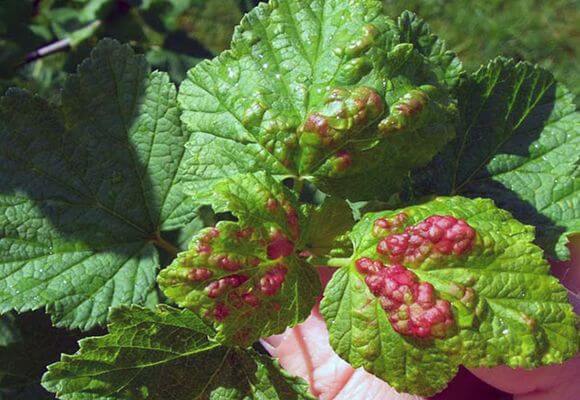
The fungus hibernates in fallen grape leaves and on some other plants. In a warm, humid spring, the mushroom quickly germinates and begins to spread. The first signs can be seen already at the end of May, light spots appear on young leaves, which turn red over time (in colored grape varieties).
Usually, the first 4-8 leaves are at risk, at the initial stage, the infection is similar to mildew. Red spots come from the edge of the leaf, limited by large and small veins.
The optimum temperature for development is considered to be 18-20 ° C. In summer, in dry and hot seasons, the mushroom stops its active distribution. At the end of August, in September, with an increase in humidity, re-infection occurs, but without serious consequences.
Spider mite
One of the reasons why the leaves of grapes turn red is the infection of the plantings with a spider mite (Tetranychidae). They feed on the inner flesh through punctures on the large veins on the back. Soon, the affected leaves become covered with convex spots, turn red (turn brown in white varieties) and dry out. Under favorable conditions for life, the spider mite multiplies rapidly (6-10 generations during the warm period) and can cause significant damage to the future harvest. The berries become more acidic and small, about 20-30% may crumble before picking.
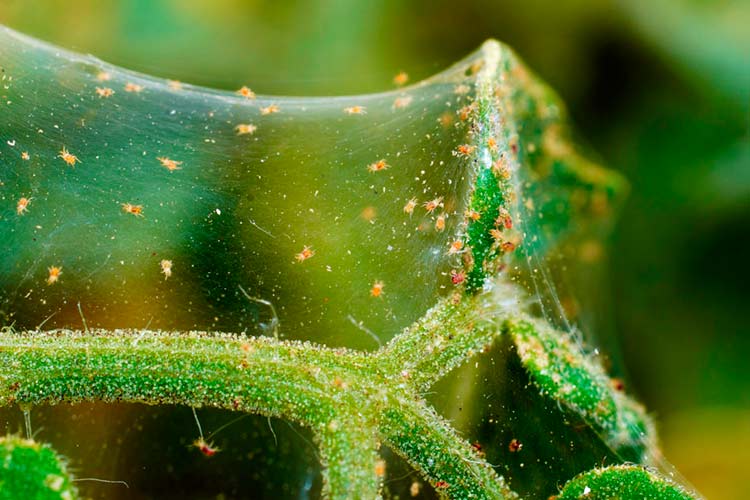
Spider webs can be seen on infected plants. Spider webs make it difficult for chemicals to penetrate, making pest control more difficult. Adults, about 0.5 mm long, use binoculars to see and count them. More than five pieces per leaf are a signal for urgent processing of plants.
Noncommunicable rubella
Grapes are very picky about the composition of the soil and mineral fertilizers. An excess or deficiency of some elements can lead to a general weakening of the plant and reddening of the leaves. The most common case is potash starvation in the vineyard. In this case, the green mass turns red evenly over the entire planting area. The second reason may be an excess of fluorine due to incorrect calculation of the dosage of fluorine-containing fertilizers.
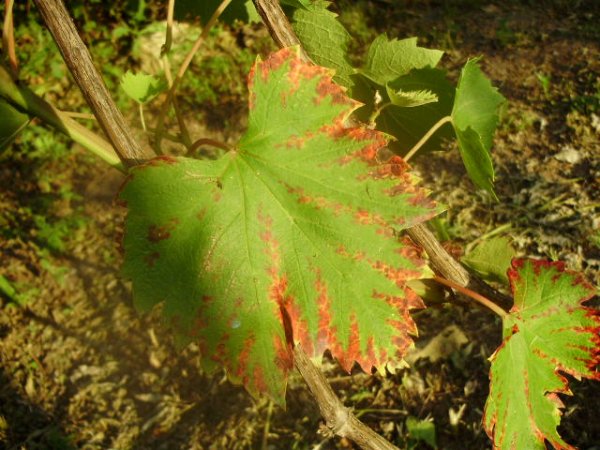
Important. Overloaded vines, with an illiterate calculation of the number of brushes for ripening and an uneven garter, can also signal a weakening by reddening of the leaves.
Leaf damage by cicadas
Small insects resembling grasshoppers can cause significant damage to the grape harvest and are one of the reasons why the leaves of grapes begin to turn red. Grape leafhoppers feed on plant sap at all stages of their development. Adult insects are easy to spot by shaking the bush. The cicadas jump together in different directions.
Dots and yellowish spots appear on damaged leaves, which turn red over time in colored grape varieties. The leaf curls and dries up. In hot, dry weather, the number of cicadas grows rapidly, which can cause significant damage to the crop. In addition to direct damage to plants, cicadas are carriers of infections.
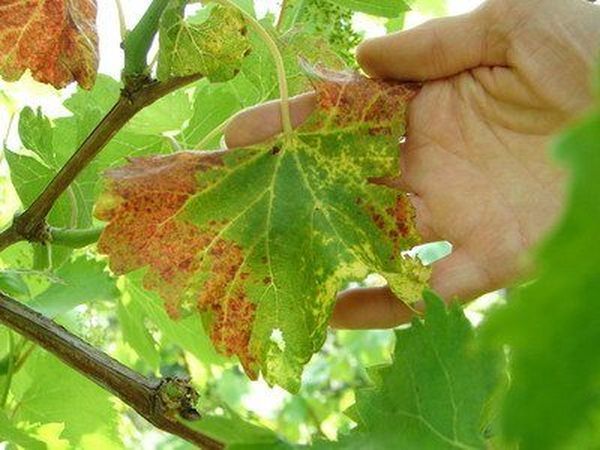
Important. Cicadci do not like the smell of garlic and onions and try to stay away from them. Sowing onions in the aisles of grapes will keep pests away.
Effects
Red spots, regardless of the cause of their occurrence, lead to wilting of leaves and early exposure of shoots. A large loss of green mass affects the quality of the fruit. Sugar content sharply decreases, grapes crumble before ripening, and lose their profitable appearance. Disease of the first leaves in early spring stops the development of shoots and interferes with full flowering.
The weakened plant fights other diseases poorly in the future. Mechanical damage to leaves by pests is an "open gate" for serious fungal and viral infections.
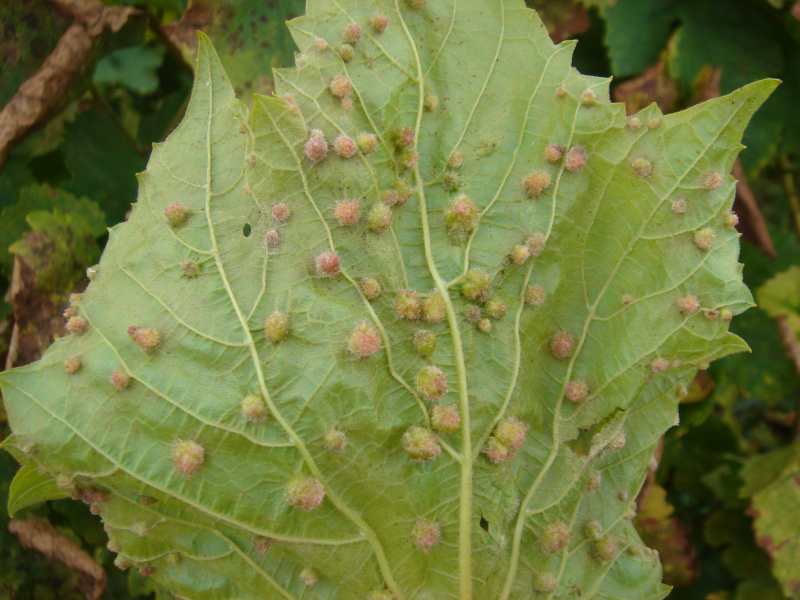
Ways to fight infection
Before deciding what to do with redness, you need to find out exactly the cause. The different nature of leaf damage requires the use of certain chemicals.
Rubella treatment
Against infectious rubella, the bushes are treated with fungicides in the 3-4th leaf phase. After 7-10 days, the procedure is repeated. Then the treatment is combined with mildew sprays after another 7-10 days. Rubella drugs usually provide for the simultaneous fight against mildew: Ridomil Gold, Delan, Switch, Skor and others. The bushes are sprayed on both sides early in the morning in dry, calm weather.

Treatment for noncommunicable rubella
The fastest way to saturate grapes with potassium is to carry out foliar spraying with a complex mineral fertilizer containing potassium sulfate or other compounds.The first feeding is planned two weeks before flowering.
The second spraying is done a week after flowering. Grapes do not react so quickly to root dressing with potassium, but when selecting the composition of a complex fertilizer, potassium compounds must be added. In autumn and spring, humus is applied in large quantities under each bush.
Spider mite control
Treatment of red spots on grapes due to the spread of spider mites is carried out by treating the vines in early spring with 5% lime-sulfuric decoction. It is important to be in time before the kidneys swell. During the growing season, ticks are exterminated by spraying with a 1% solution of colloidal sulfur. The preparations "Fufanon", "Talstar", "Omayt", "Karbofos" have shown themselves well in the fight against spider mites.
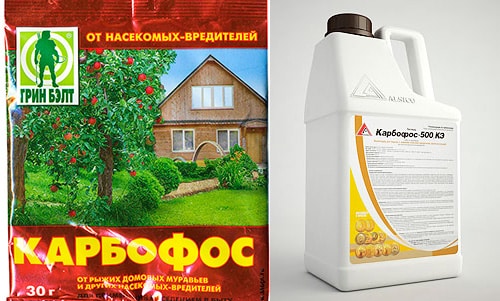
Processing is carried out only on the reverse side, carefully spraying each leaf. The cobweb prevents the penetration of drugs to pests. After 10 days, the treatment is repeated.
Means for fighting leafhoppers
The fight against leafhoppers with the help of chemicals is carried out only with an uncontrolled spread of insects. Usually their number is controlled by predatory insects, you can set sticky traps. Treating bushes with garlic infusion will help scare off leafhoppers. A glass of minced garlic for 10 liters of water. The insects will not die, but will try to move to another place. If the damage from leafhoppers exceeds the norm, the bushes are treated with pesticides.
They have proven themselves well:
- "Benzophosphate" (60 g / 10 l of water, valid for 2-3 weeks);
- "Confidor" (1.5-2 g per 10 liters of water, valid for 2-4 weeks);
- "Zolon" (valid for 2-3 weeks).
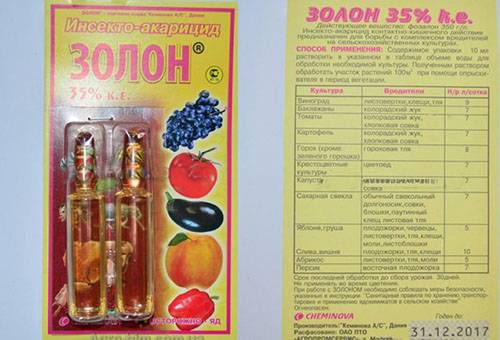
Before cultivating the vineyard, the planting is carefully weeded and severely damaged shoots are removed.
Important. Larvae of leafhoppers are able to feed on the sap of only living plants; after pruning, they quickly die.
Treatment is carried out in spring and summer 2-3 times with a break of 10-14 days. Spraying starts from the lower branches, spraying the solution with fine dust on both sides. Neighboring fruit crops and grass are also treated with an insecticide. A month before the start of grape ripening, it is forbidden to treat bushes with drugs.
Prevention means
All residues after pruning grapes, as well as fallen leaves, are removed from the site. It is on them that most pests and fungi winter. The area occupied by grapes should be kept free of weeds. It also provides shelter and food for pests and fungi.
Bushes, weakened due to lack of nutrients, react sharply to infection with other infections. Therefore, you need to follow the feeding schedule. In the fall, rotted manure is brought in for digging. During the growing season, do not forget about foliar potash dressing. Proper pruning and tying of vines will protect the bushes from dampness and poor ventilation. This is the key to success in the fight against fungal diseases. Gardens with garlic and onions next to the vineyard protect from the invasion of leafhoppers.
